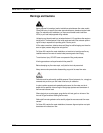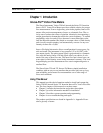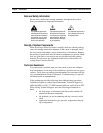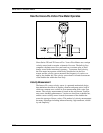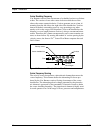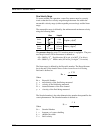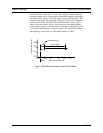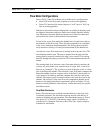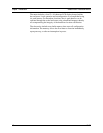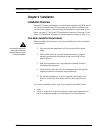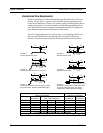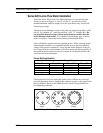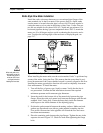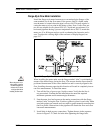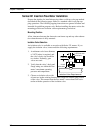
Series 220/221 Instruction Manual Chapter 1 Introduction
IM-22 1-7
Flow Meter Configurations
Innova-Flo™ Vortex Flow Meters are available in two configurations:
• Series 220 in-line flow meter (replaces a section of the pipeline)
• Series 221 insertion flow meter (requires a “cold” tap or a “hot” tap
into an existing pipeline)
Both the in-line and insertion configurations are similar in that they both
use identical electronics and have similar sensor heads. Besides installa-
tion differences, the main difference between an in-line flow meter and
an insertion flow meter is their method of measurement.
For an in-line vortex flow meter, the shedder bar is located across the en-
tire diameter of the flow body. Thus, the entire pipeline flow is included
in the vortex formation and measurement. The sensing head, which di-
rectly measures velocity is located just downstream of the shedder bar.
An insertion vortex flow meter has its sensing head at the end of a 0.750
inch diameter tubular stem. The stem is inserted into the pipe until the
sensing head is properly located in the pipe’s cross section. The sensing
head fits through any entry port with an 1.875 inch minimum internal di-
ameter.
The sensing head of an insertion vortex flow meter directly monitors the
velocity at a point in the cross-sectional area of a pipe, duct, or stack (re-
ferred to as “channels”). The velocity at a point in the pipe varies as a func-
tion of the Reynolds number. The insertion vortex flow meter computes the
Reynolds number based on constant values of the fluid’s density and vis-
cosity stored in its memory and then computes the total flow rate in the
channel. The output signal of insertion meters is the total flow rate in the
channel. The accuracy of the total flow rate computation depends on ad-
herence to the piping installation requirements given in Chapter 2. If ad-
herence to those guidelines cannot be met, contact the factory for specific
installation advice.
Flow Meter Electronics
Innova-Flo electronics are available mounted directly to the flow body,
or remotely mounted. The electronics housing may be used indoors or
outdoors, including wet environments. The instrument requires 4-20 mA
loop power (12 to 36 VDC). One analog output signal is available for
your choice of volumetric flow rate or mass flow rate. A pulse output is
available for totalization.



